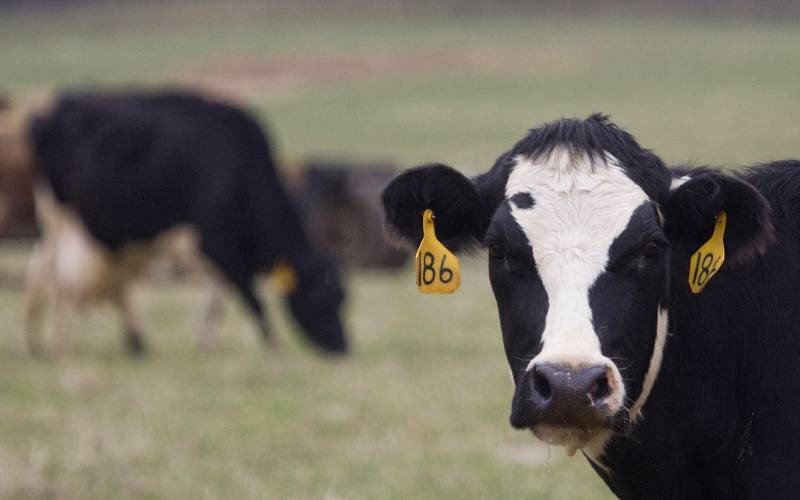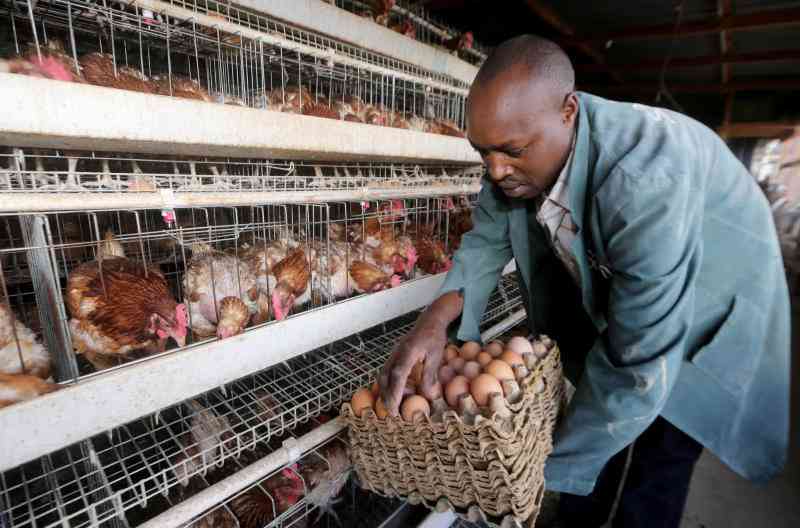
The dairy sub-sector in Kenya continues to grow and contributes about 4 per cent of the National Gross Domestic Product. The sub-sector is a source of livelihood to about 1.8 million small holder households. This sector further contributes direct and indirect employment to 750,000 and 500,000 respectively especially through vending, processing and transport.
Apart from the cash and employment, milk consumed at home provides an important source of animal protein to supplement the other foods. The cow has been used as a bank where cows and heifers may be sold at a short notice to provide cash for school fees, hospital and investment.
However, climate change, minimal capacities among the aging farmers for innovation, to a less extent poor genetics, poor exposure to the dairy development, minimal farmer information on policy and regulation of the sector has under capacitated the sector. This challenges require a decisive and sustained action.
Against this background, FarmKenya organised a two days’ dairy expo event in June 29 and 30 at Kaguru Agriculture Training Centre in Meru county.
During this event, many exhibitors showcased their products and more than 150 farmers, who were very eager to learn were trained on successful dairy enterprise. The trainers dwelt on the following topics:
Breeds and breeding
There are many exotic and improved dairy breeds from which the farmers can choose from including but not limited to Jersey, Friesian, Ayrshire, Guernsey, Friesian-Holstein and Fleckvieh. Regardless of the breed chosen, the cow should be able to give you a calf per year and produce at least 20 litres of milk every day.
The farmers noted that they had issues of repeat breeding where a cow come on heat, is served several times without conceiving. We advised them to work closely with local veterinarians who can examine the affected cows and know what the problem is and deal with it. Usually in such cases, the issue could be with the cow, semen or owner of the cow.
Housing
A good shelter acts as a buffer against harsh weather conditions such as strong winds, rain and excessive sunlight. Cow comfort is key to improving production and reducing incidence of diseases in the farm. This can be achieved by having good biosecurity measures at the farm.
Feeding
Proper feeding is essential to ensure animals receive adequate nutrients for maintenance and production, and remain healthy and in good body condition. Dairy cattle must eat a balanced diet. Too little (or poor-quality feed) results in thin animals that cannot resist disease while giving too much feed is wasteful and does not make economic sense. Lack of essential nutrients will result in ill-health, failure to reach full production potential and sometimes death.
The amount of water required depends mainly on milk yield, water content of feed, amount of feed consumed, salt content of feed and the environmental temperature. Except for high moisture content, an increase in the other factors increases water requirement.
Dairy diseases
Diseases are very costly to a farm. For management such as bloat, mastitis and milk fever, farmers were informed on how to prevent their occurrence.
Record keeping
Records are important to keep track of all animals, control inbreeding and aid in breeding planning and production, to rationalize labor, to plan for and manage the feeds, keeping track on treatment regimens and finding the effective treatments and assess the profitability of the venture.
Value addition
Value addition provides opportunities for dairy farmers to reap more per unit volume from their milk especially when they are in a co-operative so that they can acquire the, technology infrastructure and machines required.
Despite the ever rising feed costs, dairy farming has untapped potential that can change the lives of many both in Kenya and in the region.
Want to get latest farming tips and videos?
Join Us
 The Standard Group Plc is a multi-media organization
with investments in media platforms spanning newspaper print operations,
television, radio broadcasting, digital and online services. The Standard Group
is recognized as a leading multi-media house in Kenya with a key influence in
matters of national and international interest.
The Standard Group Plc is a multi-media organization
with investments in media platforms spanning newspaper print operations,
television, radio broadcasting, digital and online services. The Standard Group
is recognized as a leading multi-media house in Kenya with a key influence in
matters of national and international interest.
 The Standard Group Plc is a multi-media organization
with investments in media platforms spanning newspaper print operations,
television, radio broadcasting, digital and online services. The Standard Group
is recognized as a leading multi-media house in Kenya with a key influence in
matters of national and international interest.
The Standard Group Plc is a multi-media organization
with investments in media platforms spanning newspaper print operations,
television, radio broadcasting, digital and online services. The Standard Group
is recognized as a leading multi-media house in Kenya with a key influence in
matters of national and international interest.








